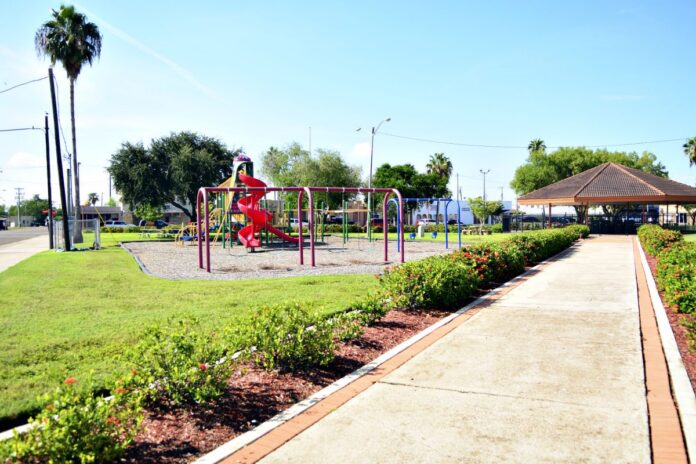HARLINGEN — Officials are having second thoughts about removing rules protecting parts of the La Placita area against the opening of adult businesses.
In a public hearing Wednesday, Planning and Zoning board members are set to consider a proposal to remove parts of Harrison and Jackson Avenues from the city’s protective boundaries, a step that would strip part of those areas from rules prohibiting such businesses as topless bars from opening there.
A second public hearing is set for Jan. 15 during a City Commission meeting.
The proposal would remove Harrison and Jackson Avenues, from the railroad tracks to F Street, from a so-called “overlay” whose rules prohibit adult businesses from opening there.
But now, city officials are considering keeping the area intact, Assistant City Manager Gabriel Gonzalez said Monday.
“We may come up with some alternatives that we will discuss at the meeting that may leave the boundaries intact,” Gonzalez said.
Meanwhile, property owner Bill DeBrooke is gathering signatures from La Placita business owners who stand opposed to removing parts of the area from the downtown district’s overlay.
“Some of the most historic buildings in town are on Harrison,” DeBrooke said at a table in a downtown restaurant. “It’s important that they be protected.”
Sign triggers proposal
A property owner’s request for a tall sign “triggered” the city’s proposal to downsize the La Placita area, Gonzalez said in an earlier interview.
When officials granted attorney Ruben Peña a permit to put up a 35-foot sign at the side of his office building at 222 W. Harrison Ave., apparently they didn’t know the electronic sign was about twice the size as the downtown district’s requirements allow.
“It’s illegal,” DeBrooke said. “This is an egregious violation of the rules. They made a mistake when they issued the permit. The downtown is the heart of Harlingen and that sign is a nail straight to the heart.”
Peña declined to comment Monday.
However, last week he said he “paid” for his sign along with the city’s permits.
If officials remove the 200 block of West Harrison Avenue from the overlay, Peña’s sign would comply with rules outside the district’s boundaries, DeBrooke said.
When officials reviewed Peña request, they realized the La Placita area’s boundaries didn’t reflect those drafted about 10 years ago with the passage of an amendment to the Downtown Improvement District’s ordinance, Gonzalez said last week.
After their review, he said, officials proposed the district’s boundaries reflect the ordinance.
Following the Planning and Zoning Commission’s decision Wednesday, city commissioners will review the recommendation before voting on whether to change the La Placita area’s overlay.
DeBrooke said he plans to present city commissioners with La Placita area business owners’ signatures opposing any changes to the overlay.
“I want the City Commission to know the property owners are behind keeping the overlay,” DeBrooke said. “The city should care about protecting the architectural and cultural heritage of this city and the downtown is where it’s at.”
How we got here
For years, DeBrooke pushed to make the La Placita area part of the downtown district to help officials better regulate businesses there.
Before the La Placita area became part of the downtown district, police struggled to control the area’s bars, said DeBrooke, who owns property in the La Placita area.
But within the downtown district’s boundaries, he said, tight restrictions have controlled the spread of adult businesses such as bars and tattoo parlors.
If officials remove parts of the La Placita area from the downtown district, he believes bars and adult businesses would open there.
Within the Downtown Improvement District, restrictions prohibit adult businesses.
If officials remove parts of the La Placita area from the overlay, residents with plans to open adult businesses such as smoke shops would have to apply for specific use permits, as they would in other parts of town, Gonzalez said.





